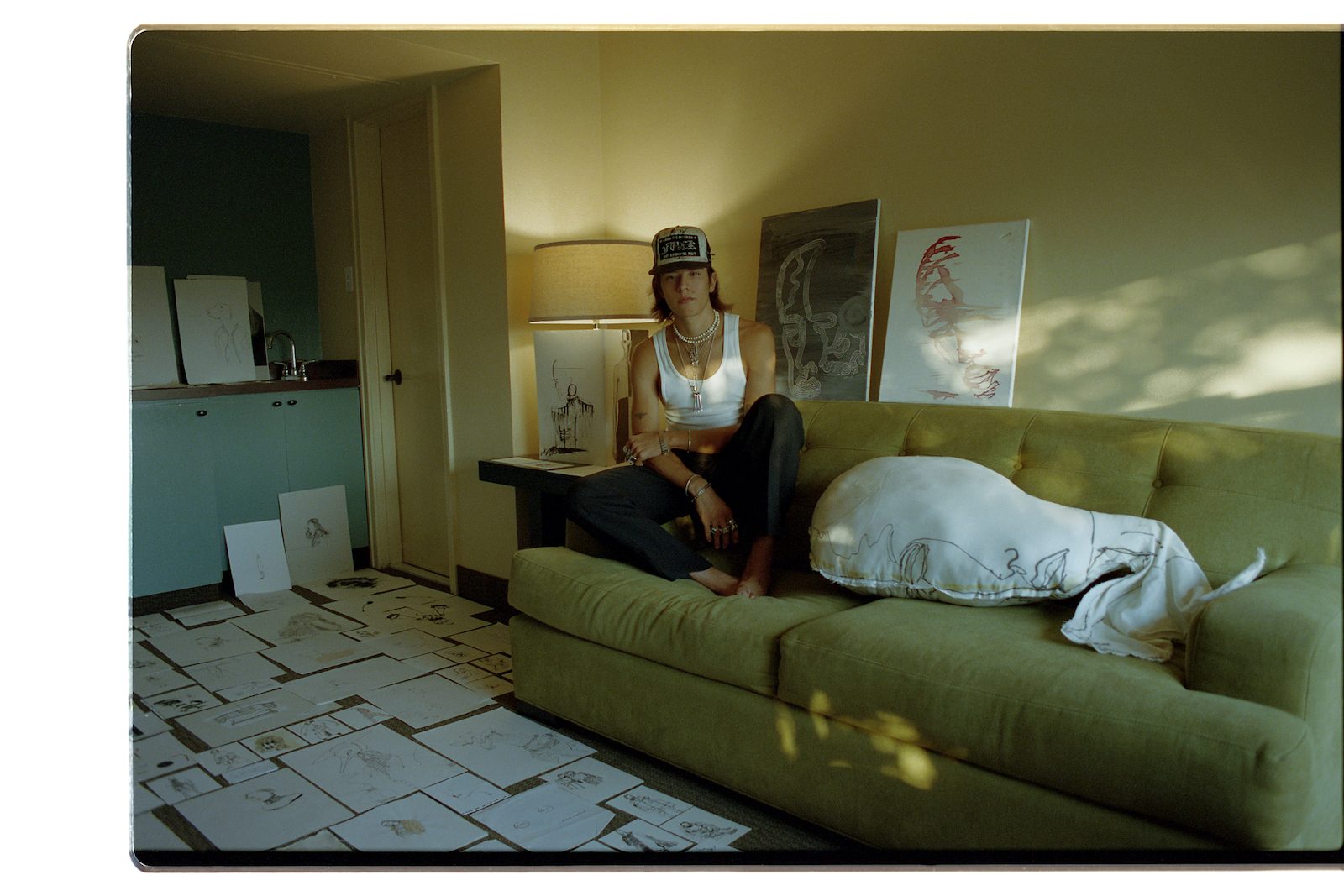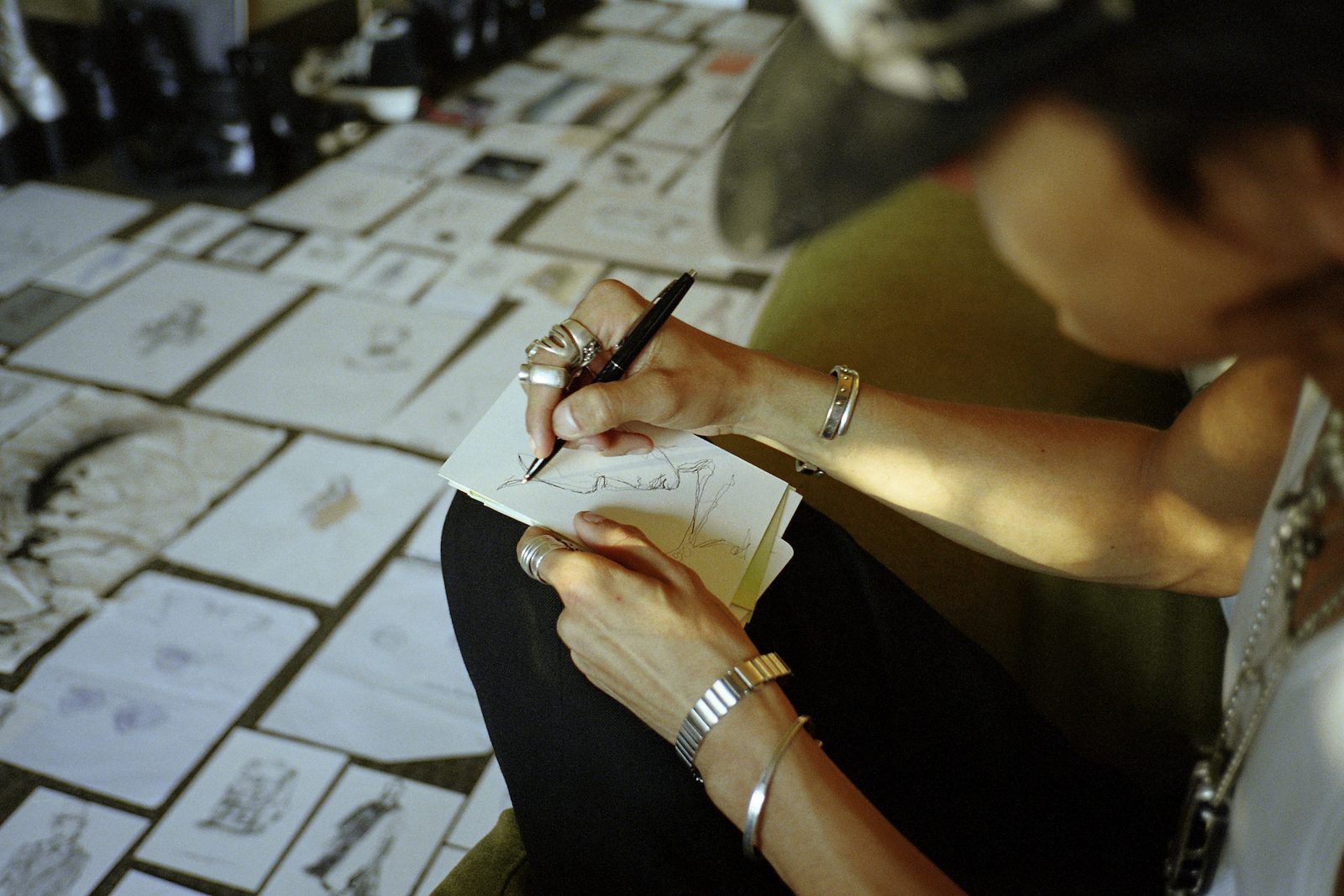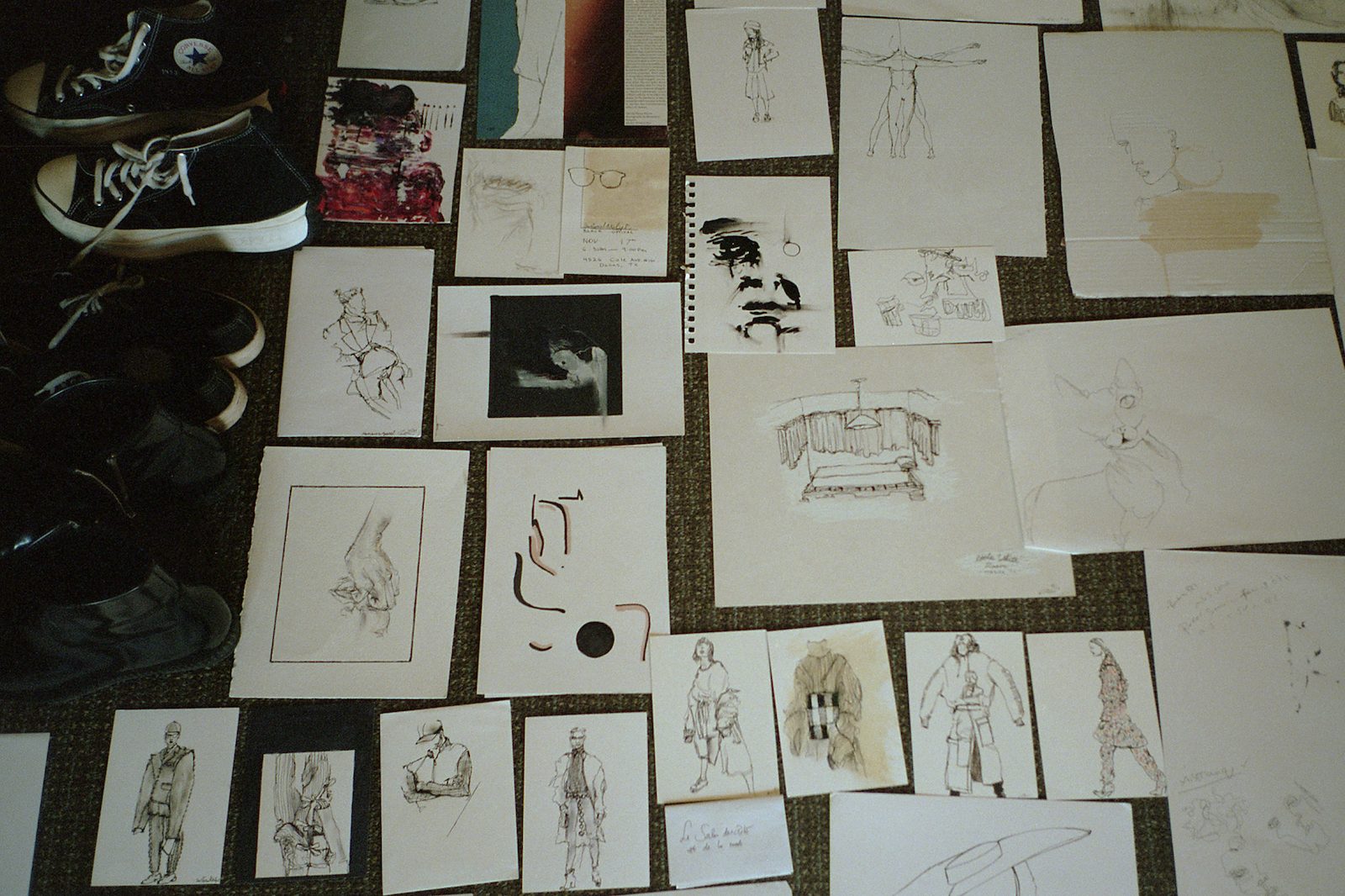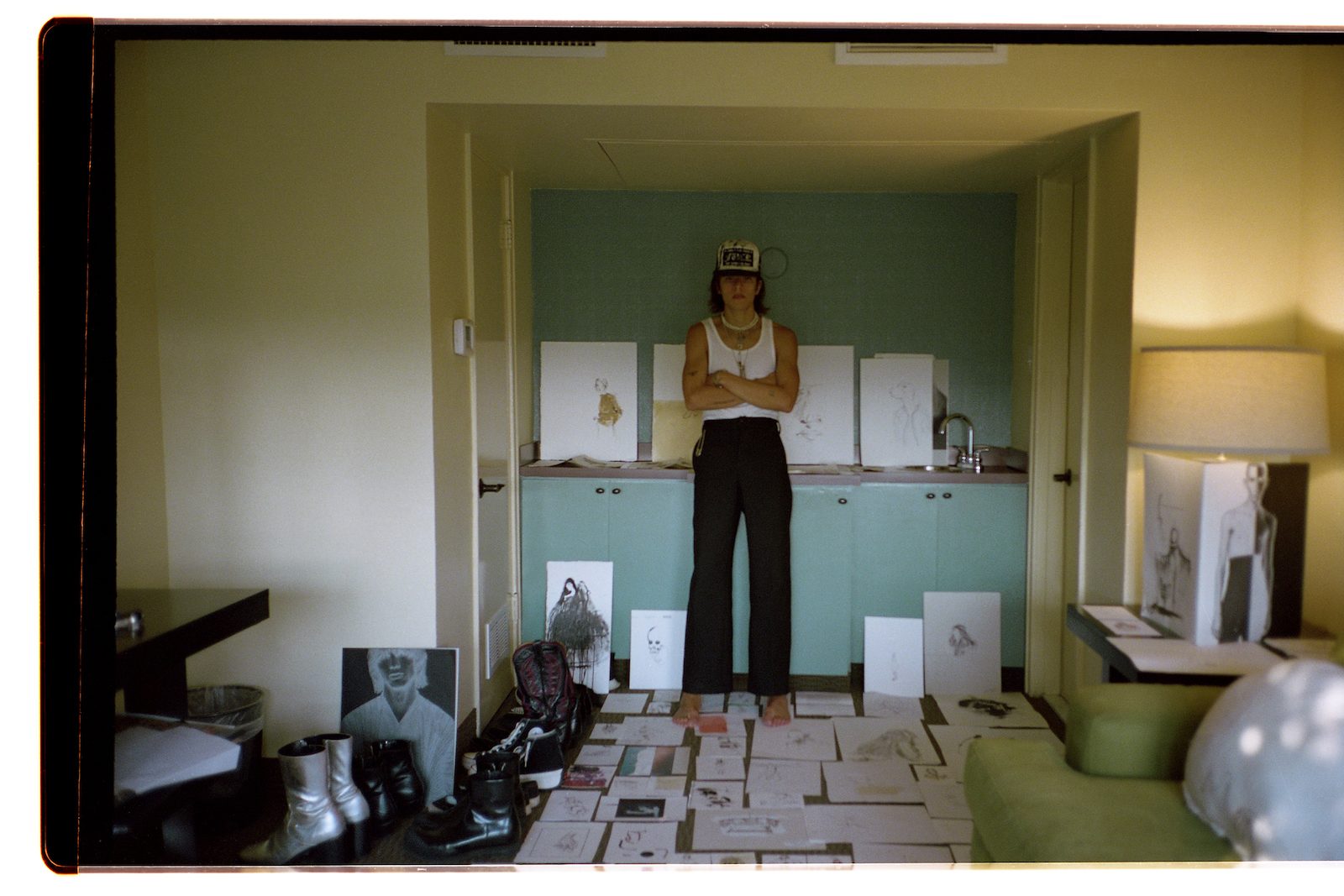Everyone is creative. Whether you’re a painter, a woodworker or an accountant—we all have our own ways of engaging with creativity every day. That’s why we’re partnering with Bombay Sapphire, to celebrate their commitment to help everyone find their canvas. Here, we’re taking a closer look at Dallas-based creative Ruben Burgess Jr.
Ruben Burgess Jr. is present. His works have a raw immediacy, like a Giacometti sculpture put to paper. But they also have an ephemeral tenderness—if you could somehow pull at a line, it feels as though the whole thing would come gracefully floating down, a pile of jet ink spiderwebs at your feet.
This feeling is most likely due to the process; Ruben creates his pieces in one single line, never stopping to lift his pen. This could take minutes or hours, but the effect is always the same— precarious perfection.
Here, we spoke with the artist about how a doodle led to his artistic philosophy and about the inspiration behind his mural, commissioned by Society6 and Bombay Sapphire for The Other Art Fair Dallas.

Your work has a very “present” feeling to it—it really puts the viewer in the moment with you. Do you feel very present and in your body when you’re drawing?
I do feel very present in my body while drawing. There is a connection that happens within contour work when I put the pen to the page and do not stop drawing. There is a flow state that happens especially when doing large scale pieces that can take hours at a time without stepping back. I have to be fully engaged and involved in the moment of creating the piece, and feel every movement until the end, when I let go and step back to view it for the first time.
What led you to art? How did you develop your current style?
I’ve been creative all of my life and have done art here and there throughout, however, it’s only been relatively recently that I have pursued art and my style seriously. With this specific medium it has been about four years doing contour line drawing under the name SartorialNoLift. The way that my current style developed started on a train in Paris on a study abroad tour. I was just doodling and did one quick contour drawing in which I immediately felt something different, something raw that I wanted to keep going. From there I just continued drawing without lifting my pen over and over until it naturally developed.

You draw a lot of figures—who are the people or types of people that inspire you the most? Who would be your dream person to illustrate?
Yes, my favorite subjects to draw are in fact people although these figures tend to have something unique about them that it is unbalanced or incomplete in an obscure manner—whether that is voluminous clothing, a unique angle or a posture that is different. I like to express movement and imbalance within my pieces. As far as the people who inspire me I tend to gravitate toward Japanese creators. I am most inspired by Rei Kawakubo Who started
Comme des Garçons in 1969. Her philosophies in freedom, beauty and shape are so purely emotional and expressive, they really resonate with me as a whole. I would love to illustrate Kawakubo in her space.
Tell us a bit about your process; how do you create each of your works?
The way I create most works are through connection with each subject I choose to illustrate, whether it’s the shape or movement that is happening within them, or an emotion that I feel. Each piece that I create is not previously thought out, it’s not drafted, it is purely one of one.
My work is representational but also allows the viewer to dissect it and develop a meaning of their own. Through the use of negative space and incomplete figures the dialogue is opened up. I am fascinated with completing an image psychologically rather than having it presented to you in its fullest form. My process is mostly one line and one attempt without repeating. If I do use color at all it is always something natural—like natural dying or using a substance that is colored, rather than specific materials that are used for coloration; the materials I use can range from wine, spices, cough syrup, ash, etc.
How has living in Dallas influenced your work? Do you feel connected to the creative community there?
Dallas overall has allowed me the space and opportunity to focus on my work in a way that has more intentionality. I do have a community here that has resulted from creative connections and am beyond grateful to be surrounded by artists I look up to.
Tell us a bit about the mural you created for The Other Art Fair:
The mural that I have created for The Other Art Fair came from the first thought that arrived in my mind when I thought of inclusivity; I felt I wanted to represent an embrace and an acceptance of some kind.
Finally, the only prompt given to you for your mural was that it be about representation and inclusivity. What do these two words mean to you personally and how do you feel that the art world can be better at them?
Inclusivity and representation means that every voice is given the equal opportunity to be heard. Inclusivity and representation should be at the very core of the art world; every voice should have an opportunity to be objectively looked at. I definitely believe there should be more diversity within collections and traditional art institutions across the board!


Photography by Tony Krash
Shop Ruben’s Work:
Comments